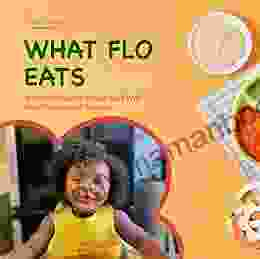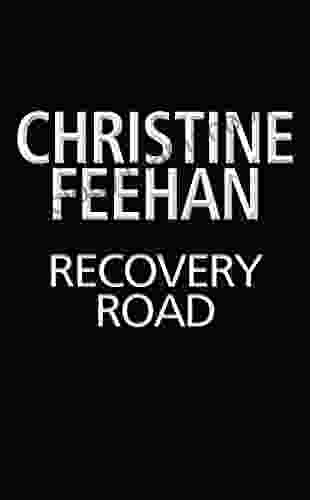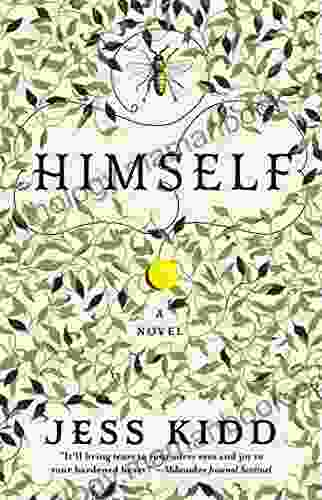How to Tell a Great Story: The Ultimate Guide to Captivating Your Audience

5 out of 5
| Language | : | English |
| File size | : | 3051 KB |
| Text-to-Speech | : | Enabled |
| Screen Reader | : | Supported |
| Enhanced typesetting | : | Enabled |
| Word Wise | : | Enabled |
| Print length | : | 15 pages |
| Lending | : | Enabled |
Storytelling is a powerful tool that can be used to entertain, inform, and persuade. A well-told story can transport us to another world, introduce us to new characters, and teach us valuable lessons. If you want to learn how to tell a great story, there are a few key elements that you need to keep in mind.
The Elements of a Compelling Narrative
Every great story has a few key elements that make it compelling and engaging. These elements include:
- A clear and concise premise. What is your story about? What are the main characters and what do they want?
- A well-developed plot. The plot is the backbone of your story. It should be exciting and engaging, and it should keep readers guessing until the very end.
- Compelling characters. Readers should be able to relate to and care about your characters. They should be flawed and complex, and they should drive the plot forward.
- A satisfying resolution. The ending of your story should be satisfying and provide closure for the reader. It should also leave them thinking about your story long after they've finished reading it.
How to Structure Your Story
Once you have a clear understanding of the elements of a compelling narrative, you need to start thinking about how to structure your story. There are many different ways to structure a story, but there are a few basic principles that you should keep in mind:
- Start with a hook. The first few sentences of your story should grab the reader's attention and make them want to keep reading.
- Develop your characters. Introduce your characters and give readers a chance to get to know them. What are their goals? What are their motivations? What are their flaws?
- Build the plot. The plot should be exciting and engaging, and it should keep readers guessing until the very end.
- Resolve the conflict. The ending of your story should be satisfying and provide closure for the reader.
Tips for Engaging Your Audience
In addition to the basic elements of storytelling, there are a few tips that you can use to engage your audience and keep them coming back for more:
- Use vivid language. Paint a picture with your words and make your story come to life.
- Create a sense of suspense. Keep readers on the edge of their seats by building tension and suspense.
- Appeal to the emotions. Make your readers feel something. Make them laugh, cry, or think.
- Be authentic. Write from the heart and share your own unique perspective.
Telling a great story is an art form. It takes practice and dedication, but it's a skill that anyone can learn. If you follow the tips in this guide, you'll be well on your way to writing stories that captivate your audience and leave them wanting more.
5 out of 5
| Language | : | English |
| File size | : | 3051 KB |
| Text-to-Speech | : | Enabled |
| Screen Reader | : | Supported |
| Enhanced typesetting | : | Enabled |
| Word Wise | : | Enabled |
| Print length | : | 15 pages |
| Lending | : | Enabled |
Do you want to contribute by writing guest posts on this blog?
Please contact us and send us a resume of previous articles that you have written.
 Top Book
Top Book Novel
Novel Fiction
Fiction Nonfiction
Nonfiction Literature
Literature Paperback
Paperback Hardcover
Hardcover E-book
E-book Audiobook
Audiobook Bestseller
Bestseller Classic
Classic Mystery
Mystery Thriller
Thriller Romance
Romance Fantasy
Fantasy Science Fiction
Science Fiction Biography
Biography Memoir
Memoir Autobiography
Autobiography Poetry
Poetry Drama
Drama Historical Fiction
Historical Fiction Self-help
Self-help Young Adult
Young Adult Childrens Books
Childrens Books Graphic Novel
Graphic Novel Anthology
Anthology Series
Series Encyclopedia
Encyclopedia Reference
Reference Guidebook
Guidebook Textbook
Textbook Workbook
Workbook Journal
Journal Diary
Diary Manuscript
Manuscript Folio
Folio Pulp Fiction
Pulp Fiction Short Stories
Short Stories Fairy Tales
Fairy Tales Fables
Fables Mythology
Mythology Philosophy
Philosophy Religion
Religion Spirituality
Spirituality Essays
Essays Critique
Critique Commentary
Commentary Glossary
Glossary Bibliography
Bibliography Index
Index Table of Contents
Table of Contents Preface
Preface Introduction
Introduction Foreword
Foreword Afterword
Afterword Appendices
Appendices Annotations
Annotations Footnotes
Footnotes Epilogue
Epilogue Prologue
Prologue Kelly Cibrian
Kelly Cibrian Annie Groves
Annie Groves Linda Caputi
Linda Caputi Nicola De Brun
Nicola De Brun Tiffany Richardson
Tiffany Richardson Bitel Beyette
Bitel Beyette Ciaran Carson
Ciaran Carson Gordon Lloyd
Gordon Lloyd L T Ryan
L T Ryan Edgar Allan Poe
Edgar Allan Poe Roger Hargreaves
Roger Hargreaves Sally Larsen
Sally Larsen William Kotzwinkle
William Kotzwinkle Mas Tellocin Eniatnof
Mas Tellocin Eniatnof Alicja Urbanowicz
Alicja Urbanowicz Hayden Thorne
Hayden Thorne Toby Neal
Toby Neal Nuala Gardner
Nuala Gardner Vanisha Chavda
Vanisha Chavda Phillis Levin
Phillis Levin
Light bulbAdvertise smarter! Our strategic ad space ensures maximum exposure. Reserve your spot today!

 Tennessee WilliamsThe American Primitive Methodist Church of Norristown: A Historical Tapestry...
Tennessee WilliamsThe American Primitive Methodist Church of Norristown: A Historical Tapestry... Shawn ReedFollow ·12.8k
Shawn ReedFollow ·12.8k George OrwellFollow ·5.5k
George OrwellFollow ·5.5k Dan BellFollow ·14.5k
Dan BellFollow ·14.5k Colt SimmonsFollow ·12.5k
Colt SimmonsFollow ·12.5k Demetrius CarterFollow ·8.7k
Demetrius CarterFollow ·8.7k Donovan CarterFollow ·10.8k
Donovan CarterFollow ·10.8k Dale MitchellFollow ·15.9k
Dale MitchellFollow ·15.9k Chad PriceFollow ·18.3k
Chad PriceFollow ·18.3k

 Vernon Blair
Vernon BlairThe Woman I Met in My Dream: An Unforgettable Night of...
As the veil of night...

 Carlos Fuentes
Carlos FuentesThe Ultimate Guide to Healthy Eating for Toddlers: Meal...
As a parent of a...

 Peter Carter
Peter CarterInside My Autistic Mind: A Journey of Self-Discovery and...
Autism spectrum disorder (ASD) is a...

 Isaac Asimov
Isaac AsimovA Journey Through Jane Austen's Literary Masterpieces:...
Jane Austen, the renowned English...

 Hank Mitchell
Hank MitchellAdvancements in Textiles: Science and Technology by...
The textile...

 Troy Simmons
Troy SimmonsRecovery Road: An Odyssey of Hope and Redemption by...
Recovery Road is a...
5 out of 5
| Language | : | English |
| File size | : | 3051 KB |
| Text-to-Speech | : | Enabled |
| Screen Reader | : | Supported |
| Enhanced typesetting | : | Enabled |
| Word Wise | : | Enabled |
| Print length | : | 15 pages |
| Lending | : | Enabled |







